IBC365 speaks with three user experience designers working for the BBC, RTE and BluTV on the challenges and changes to creating and evolving user interfaces for modern audiences.
User experience (UX) designers specialise in enhancing user satisfaction of a platform or digital product to improve the usability, accessibility and desirability from content discovery to personalisation and delivery.
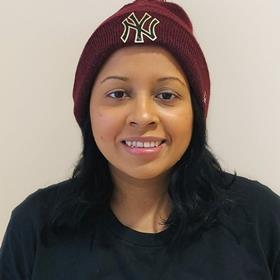
Leena Haque
Senior UX designer and neurodiversity lead, BBC
Leena Haque is a senior UX designer at the BBC where she is currently working on a research programme that is investigating how neurosciences can help to interpret, inform and develop next generation user experiences. She leads and manages creative UX projects from concept to production, transforms innovative design ideas into innovative user interfaces (UI).
What value does a good UX bring to audiences for content discovery?
A good UX should appreciate and work across different groups of people, different communities, different abilities, different preferences.
This means creating a simple journey and providing users with the appropriate, personalised tools that enable them to navigate through a space intuitively.
Being able to identify and deliver these experiences highlights why diversity in the industry is something that needs constant focus and is crucial to success, because without UX teams comprised of different experiences, social and cultural backgrounds and ways of thinking we can’t possibly hope to create these inclusive experiences.
What is your primary responsibility of a UX designer and what are you working on now?
I am currently involved in researching new design methodologies and content ideation as part of a programme which aims to understand and learn from the advances in Neuroscience with the intention of applying this in UX design, called this cognitive design.
Alongside the advances in artificial intelligence (AI), there is a similar volume of work being completed which seeks to understand and explain how we think; to uncover the secrets of the unconscious workings of our brains that influence and interact with our conscious mind.
If we can better understand why people do things, their behaviours and influences at a cognitive level we could improve the results we achieve from UX research and ultimately provide more intuitive experiences for users.
It’s exciting work and allows me to stretch my creative imagination.
What is the most challenging aspect of being a UX designer?
I find it difficult to deal with the systems and processes that sometimes inadvertently produce barriers at work, which conflict with my preference for creative thinking and innovation. I understand why we need processes in place, but as with any good user experiences they should be there to support us, rather than get in the way as they sometimes feel.
What advice would you offer someone pursuing a career in UX design?
Don’t let the lack or absence of any formal design or creative qualification put you off.
Develop your sense of curiosity, creativity and perseverance as part of your search for opportunities and talk to people and find out about their journeys into design, find meet-ups and groups to learn about new ideas and developments in to the industry.
Personal perspectives, passions and experiences are ultimately what will differentiate you from everyone else, so think about how these things relate to the roles you are interested and build your personal USP around them.
Are there technical limitations?
We can sometimes place too much reliance on data. It is incredibly powerful and has been demonstrated by its application with machine learning (ML) and AI. But we shouldn’t forget that we are designing for humans and while analytics does help, we shouldn’t be afraid of getting away from the screen and engaging directly with people and communities.
There is still so much we can learn from each other that often data doesn’t or can’t portray.
Analytics is an important tool but often comes down to how we as people, interpret the data and as people, we can be influenced by our own unconscious biases.
Talking, collaborating and learning from others, especially people outside your regular work or social circles can help us overcome these biases and ultimately create a streamlined UX.
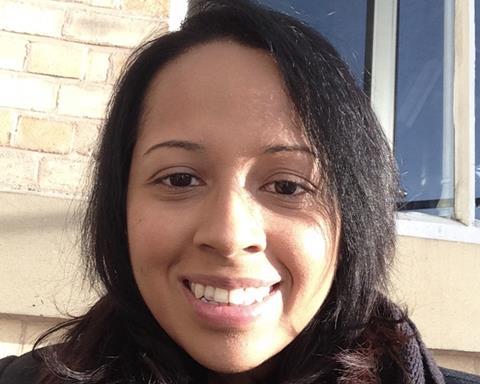
How has technology changed the way you work?
Technology has been crucial from a couple of perspectives. The first being an accessibility tool, supporting my preferences for learning and communicating in particular because I am very much a visual thinker, so lengthy written documents are not helpful.
Accessible technology allows me to navigate around those things I find harder to use, such as using speech to text software, while also providing me with the tools to express myself via more visual mediums like presentations, film and art.
The other aspect is the ability to bring people together and offer us new ways to engage an audience. I can talk to and collaborate with people all over the world, sharing ideas and finding out what other people are doing.
It is fascinating to consider how developments in mixed reality, HCI and AI will change the way we engage with users, how they learn, communicate and play.
What was your route into the industry?
I’ve had a rather unusual route into design and I was introduced into the team by the chief creative officer, Colin Burns, who saw some of the work I’d done for an initiative called BBC CAPE (creating a positive impact).
CAPE is an inclusion initiative aimed at raising awareness of Neurodiversity in the workplace and improving the working environment to promote opportunities for Neurodivergent people.
I had developed products for this initiative and the different perspective I brought to creative ideation and delivery. I have autism and I believe this gives me a unique insight to experiences and a different way of approaching problem solving tasks.
What was your route into BBC? What UX skills or experience do you need?
I’ve had to approach things differently in order to accommodate my particular learning styles. I graduated from Durham University, where I found the right, supportive environment that enabled me to perform at my best and I subsequently went on to complete a Masters in European Studies at LSE.
These experiences gave me a confidence in my abilities, as well as developing my natural curiosity in all things and creative approach to problem solving.
I believe it is these human skills that are most important to any design role rather than a specific academic route or subject matter. The ability to empathise with others, to openly collaborate in order to ask the right questions and find the optimum solutions and ultimately to just be continually inquisitive.
The tools and methods used in Design can all be learned as you go, but these personal skills are things that are developed and refined through our experiences.
Diversity in the industry is something that needs constant focus and is crucial to success because without these different experiences, social backgrounds, ways of thinking we can’t possibly hope to create experiences that meet the needs of users in a multicultural, global marketplace.
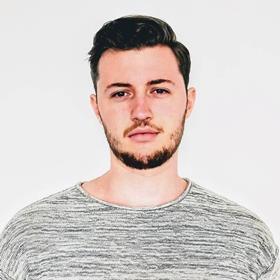
Joost Reus
UX and UI designer, RTL
Joost Reus graduated with a Bachelor in Communication and Multimedia Design from the Amsterdam University of Applied Sciences in 2018. He initially worked for an agency before landing his first job at RTL working as a UX designer on the video streaming platform Videoland.
How did you become a UX designer?
I studied CMD, which I is the most common entry to become a UX designer, as well as a passion for the industry, design trends, technical specifications and generally a love for working with digital products.
The amount of people studying to become a UX designer has increased by a lot since I started, so I think you need to stand out to land a job at the best firms.
What value does a good UX bring to audiences for content discovery, searchability etc?
A good UX is paramount and a our primary focus working on a content video streaming platform. The team and I are constantly working on understanding our users better and looking for ways to improve content discovery, including incorporating their mood or time of day and other ways for people to find the things that they love and want to watch immediately.
What are you working on now?
My focus is on the web side of things, so that means the landing pages, the user onboarding and the web platform.
I previously worked on the iOS and Android apps but I switched teams about two months ago to focus on working on a design system and style guide to ensure everything is visually consistent, coherent and easy for the user to navigate.
I also concentrate on the user flows and design of new features and reviewing them once the developers have built the product.
What advice would you offer someone pursuing a career in UX design?
It certainly helps to use as many digital products as you possibly can - download all the apps, get free trials of all the subscription services - to see how they work and what you like about them as a user.
It really all boils down to a passion for products that work really well and wanting to know why and how they do it. For me, it also really helped that I was also interested in the technical side of things, like HTML/CSS/JavaScript code, I even did some Node.js and Unity 3D for one semester at university which has helped me starting out in the industry.
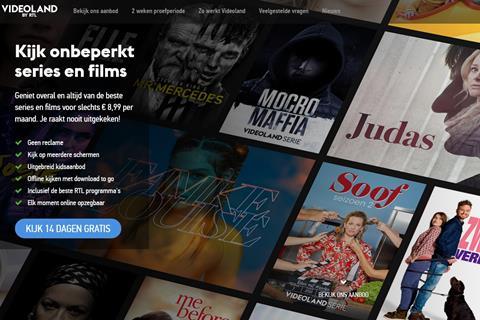
Are there technical limitations?
We definitely make a lot of decisions based on data and analytics, which we have some very bright people working on. Every idea we have we first back up by data to see if it’s worth spending our time on.
This definitely has some limitations or slowdown for very innovative or creative ideas but does keep the course of the company in the right direction and reduces risk for the company.
How has technology changed the way you work?
The technology has not necessarily changed as much as the tools, I really like to keep exploring new tools to enhance and optimize my workflow.
Fortunately I was a relatively early adopter of Sketch back in 2013, which is what everyone uses all the time now. Recently I’ve been getting more into design versioning and trying to find a good way for developer handoff, which we now use Abstract for.
There are a lot of new tools popping up constantly, from Invision Studio to Framer X to Figma and many plugins and little tools that do small things to enhance your workflow like Sketch Runner and others, I try to keep the quantity of tools I use low and quality or value it brings me as high as possible.
What is the most challenging aspect of being a UX designer?
I think the most challenging aspect is communication and managing expectations with all of the stakeholders, this is something you don’t learn at the university but it definitely a big part of your day to day work, working together and speaking the language of developers, marketeers, researchers, data analysts, managers and others.
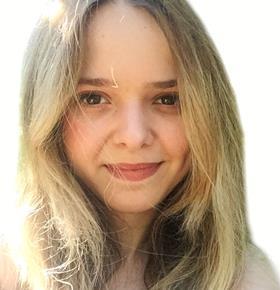
Selma Vatansever
UI and UX designer, BluTV
Selma Vatansever is the UX designer at Turkish video streaming platform BluTV, where her role focusses on user-centred design and agile software development. After she graduated she worked as a computer programming assistant on the interface design for an e-commerce site in 2012. She pursued a career in UX following her passion for user-centred design and problem solving.
What does a good UX mean for viewers?
Users should find content discovery easy to use and as a UX designer I would hope the viewers would become proficient when using a design interface. They should be able to achieve their search goal easily and quickly.
The user interface (UI) should be able clear, concise and interesting so the users wants to return to enjoy their programmes. We work by the principle that the user should not have to think too much when using your product.
A good UX design is the result of comprehensive user research, the UX designer needs to do researches, benchmarks, user tests should be done which is great for me as I have always been interested meaningful experiences through design.
What are your main objectives when designing?
My primary task is to create user-centred and user-friendly designs. What I’m doing now, I developing our existing mobile applications and identifying and solving user problems.
Ultimately to create the best UX design which is satisfying, motivating, efficient and productive for the user in a tangible system-based product.
My UX design checklist includes:
- Reduce the number of user errors
- Increase ease of use
- Increase ease of learning
- Improve credibility
- Increase traffic and audience size
The design should cost you less than development and correcting a problem at the development stage is generally ten times more expensive than fixing the same problem during the UX design phase.
”The user interface (UI) should be able clear, concise and interesting so the users wants to return to enjoy their programmes.”
What advice would you offer someone pursuing a career in UX design?
First of all, you have to be someone who loves to research and read and ultimately learn the fundamentals of UX design. The basic understanding of the design tools which include Sketch, Adobe XD Figma and Invision Studio.
I would recommend taking a a UX design course as I got a lot of information from an online training platform which has been invaluable to my development at BluTV.
After mastering the basic design knowledge and tools, the next step is to find some real work to practice and improve your UX design proficiency.
How has technology changed the way you work?
While we were just designing web sites, we started to think mobile-first and have since prioritised mobile delivery as audiences now want to do everything on their smartphones.
When I think about how I approach a creative problem, I think with always mobile first, and then grow outward. We work on the ideology that mobile is not just a trend, nor is it even the future, it’s the present because there are over 1.2 billion mobile web users worldwide, which has fundamentally changed how we work and produce UXs.
What is the most challenging aspect of being a UX designer?
Trying to develop something quickly in projects where budget is scarce and time is limited. Of course, you need to do expert analysis here. Sometimes, fast decisions can cost more, you may have to do the job again.












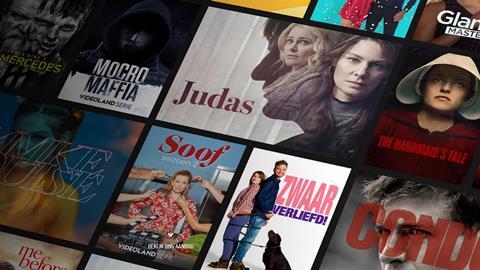












No comments yet